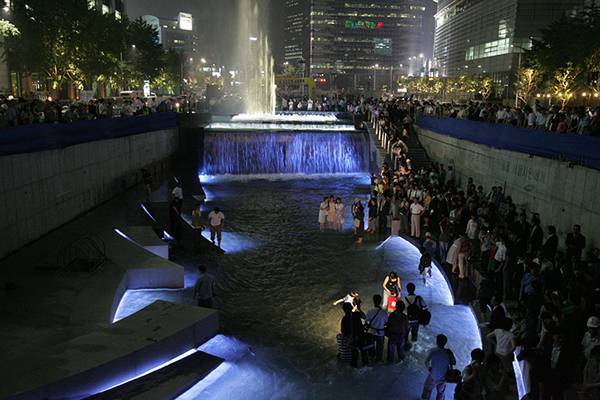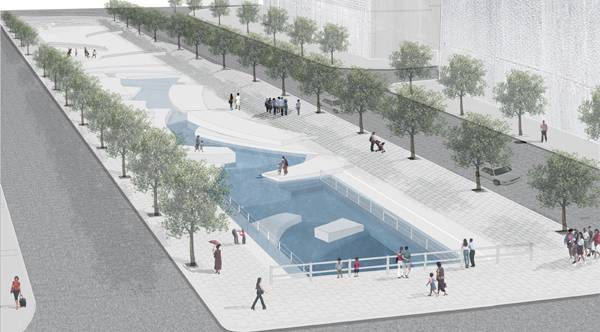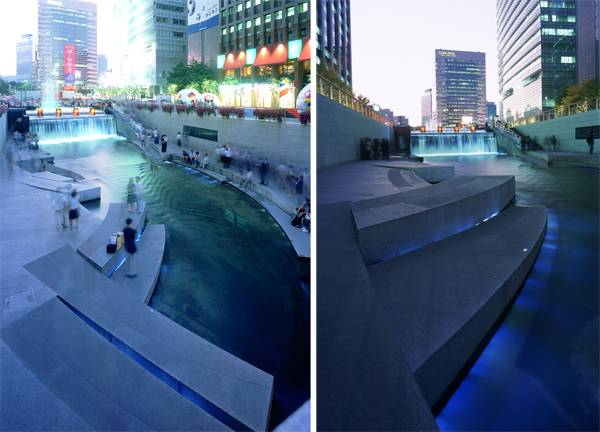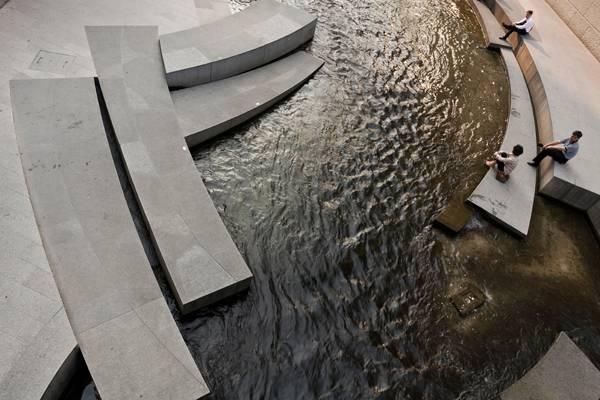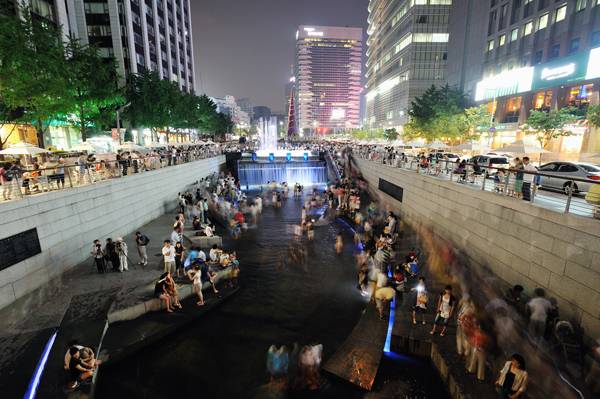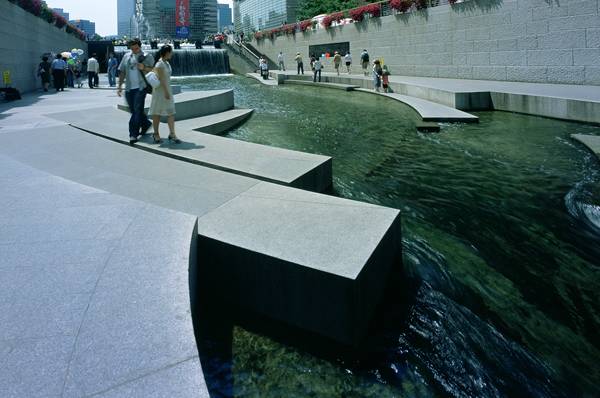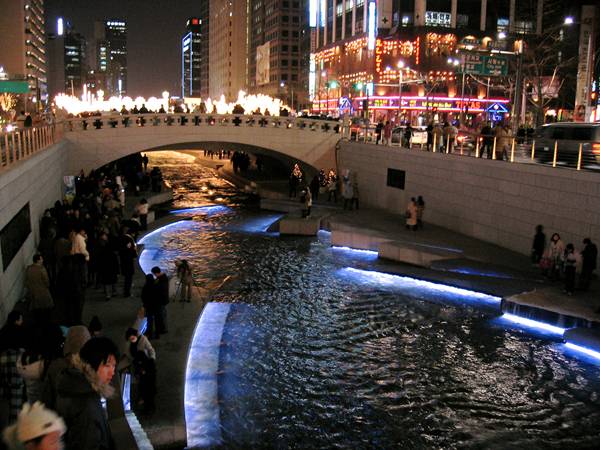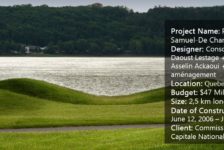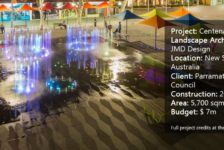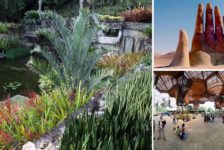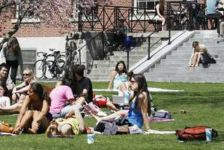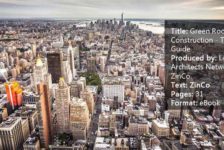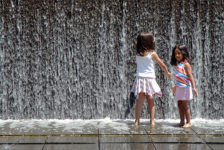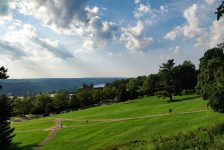The ChonGae Canal Redevelopment Project by Mikyoung Kim Design. An area of 2.25 acres at the very beginning of a seven-mile green corridor has gone through a major transformation in a commercial district of central Seoul, Korea. The ChonGae canal was restored as part of a campaign by the Seoul Metropolitan Government to revitalize local waterways. Before the intervention, the canal was highly polluted, hidden away from everyone’s view, and forgotten by the community; today, the stream once again flows openly through the heart of the city to be admired and included as a valuable feature in the urban context and creating a pedestrian haven.
The Chongae Canal Proposal
The ChonGae Canal restoration project was the winning design of an international competition that aimed to highlight the reunification of North and South Korea. Mikyoung Kim Design was responsible for the chosen proposal, which involved the use of local stones (sourced from the eight provinces of both North and South Korea) to create an urban stone garden. Donation of the stones was a political effort to unify the nation in this metaphorical act.
From a vehicular to a pedestrian focused zone For 40 years, the stream had been filled in, covered with pavement, and buried under infrastructures. It was in such poor condition that it even became a symbol of poverty to the city. The intervention by Mikyoung Kim required the demolition of nearly four miles of elevated highways, bringing down these barriers that divided the city. The stones donated were layered to create a sloped plaza guided by the water levels from hour to hour throughout the year. The outcome is a beautiful platform along the canal designed to lead people through this historic river, allowing users to engage directly with it. Reversing Heat Island Effect The restoration brought great benefits for the local environment. Besides improving the water quality, the revitalized canal also mitigates heat island effect (summer temperatures along the stream are five degrees cooler compared to the surroundings), prevents flooding (which used to be a major concern during Monsoon season), reduces air pollution (which is around 36 percent lower near the canal), and increases significantly the local biodiversity (including fish, birds, insects, and plants). Water, a symbolic experience If we look through the symbolic meanings of water, we will realize how appropriate it is in such a context. Renewal and transformation are often associated with water, as are purity and fertility. Water is the source of life; its gentle flow invites us to s-l-o-w d-o-w-n and celebrate nature, offering a perfect setting to bring together the community in this beautiful public space. Related Articles:- Turenscape Design Outstanding River Park
- Green Revival Brings Life Back to River Park
- Community Turn Abandoned Industrial Site into Public Park
A social-political-environmental project What once was a polluted waterway is today a valuable urban open space in a city in need of public landscape. This gathering area is often used for celebrating important events, such as the traditional New Year’s festival, fashion shows, and music concerts.
Its success can be measured by its popularity: The canal has received since its opening in 2005 more than 10 million visitors, plus additional thousands attracted by the public parks located along the stream. Economic Explosion The restoration also has stimulated local economic growth: It is estimated that it has added between $2.9 billion and $20 billion to the local economy, as well as creating — directly and indirectly — 300,000 new jobs. Even the coins tossed in the canal by visitors are collected and donated to charity! Soothing political issues, offering environmental benefits, and improving the population’s quality of life were the result of skillful planning. It makes one see the huge responsibility we have in our hands when we design the landscape, for its impact within a city can be of massive scale. This amazing redevelopment is, for sure, a project for us all to be inspired by. Recommended Reading:- Landscape Restoration Handbook, Second Edition by Donald Harker
- Happy City: Transforming Our Lives Through Urban Design by Charles Montgomery
Article written by Julia Lucchese Return to Homepage
Published in Blog


